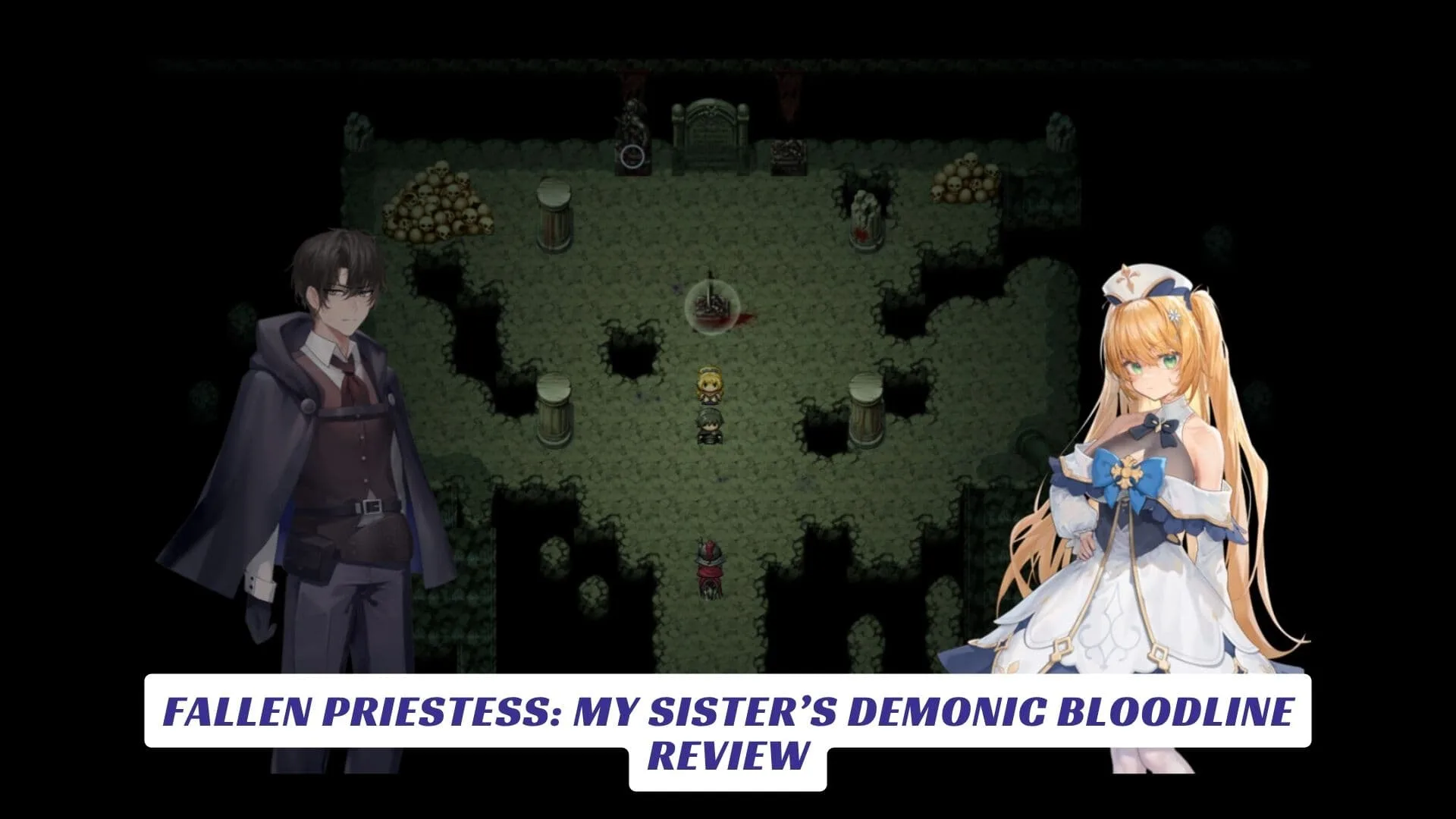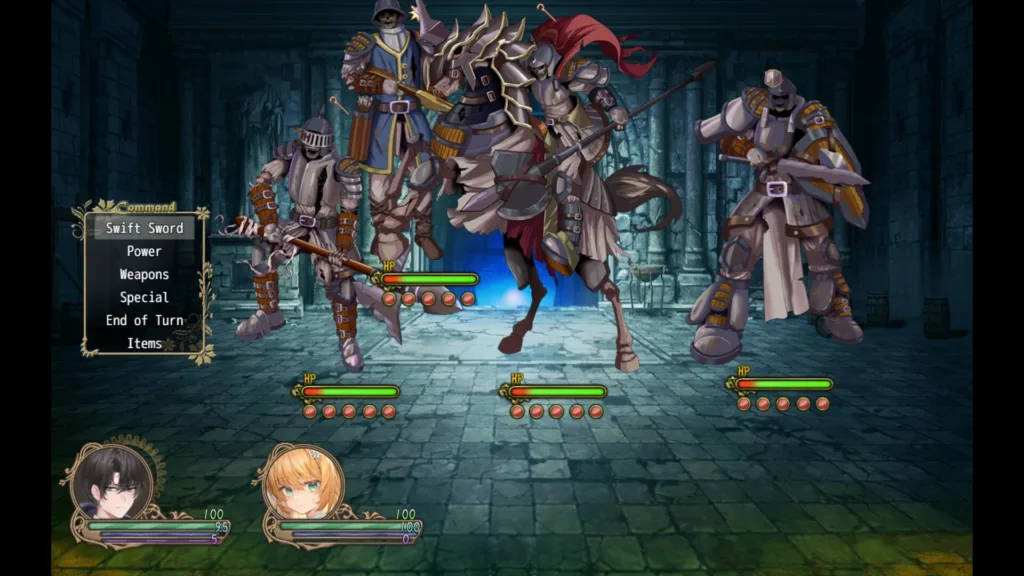
Contents
Fallen Priestess: My Sister’s Demonic Bloodline is an ambitious indie JRPG that weaves a deeply personal story around mechanically sound systems and a world that rewards curiosity. Developed by BBQ Lover and published through Saikey Studios, the game tackles a premise that feels surprisingly fresh for the genre—a brother’s desperate race to save his sister from an awakening demonic corruption. What emerges is a thoughtful blend of exploration, synthesis-driven crafting, and turn-based combat anchored by a narrative that understands the weight of family bonds and sacrifice. While still in development ahead of its full launch, the framework here suggests a title that refuses to settle for surface-level spectacle, instead building tension through loss and hope through incremental heroism.

The Heart Of The Story
The setup is elegantly tragic. Lloyd grows up in the border town of Aslint with his foster sister Trina, living a modest life shaped by hunting and artificer work—skills passed down from their foster mother. This quiet world shatters when Trina falls ill, revealing a hidden truth: both she and their foster mother carry demon blood, a dormant curse awakened by the presence of a sealed Demon Lord stirring nearby. As Trina’s condition deteriorates and her hunger for mana grows uncontrollable, Lloyd must venture beyond safety to hunt down answers and power, all while Trina’s humanity slowly slips away. The game understands that this isn’t merely a save-the-world narrative; it’s a race against personal tragedy, and every dungeon crawl carries emotional weight because the stakes aren’t abstract—they’re standing in your home town, worsening each day you’re away.

Exploration With Purpose
The world of Fallen Priestess: My Sister’s Demonic Bloodline isn’t padded with busywork. Zones are designed around gathering rare ingredients, uncovering character backstories, and discovering side quests that flesh out the setting beyond Lloyd’s immediate crisis. The loop encourages real exploration rather than aimless wandering; you’re looking for specific materials to craft, NPCs with information about the Demon Lord, and dungeons that promise stronger foes and better loot. The game respects your time by connecting every excursion to tangible progression—whether that’s new armor, potion stocks, or narrative revelations. There’s a lived-in quality to Aslint and its surroundings, with townsfolk offering quests and gossip that build a sense of a world with layers.
Crafting And Synthesis As Core Progression
Where Fallen Priestess: My Sister’s Demonic Bloodline truly distinguishes itself is through synthesis. Lloyd’s artificer background translates directly into gameplay; rather than stumbling upon better gear, you craft it. This design choice transforms looting from mere number-hunting into an engaging puzzle. Finding rare ingredients becomes a treasure hunt with tangible payoff, and the act of upgrading equipment feels earned rather than automatic. Synthesis also ties into narrative pacing—after a long day adventuring, you return home to tend Trina while also working at the forge, reinforcing the central theme that saving her requires both external heroism and intimate domestic care. This design elegantly merges mechanics and story, something many JRPGs struggle with.

Combat And Incremental Power
Turn-based combat follows a classical JRPG formula, but the emphasis on crafted loadouts gives it texture. Gear you’ve synthesized directly shapes your capabilities, and battles reward planning over reflexes. Boss encounters tied to the Demon Lord’s influence grow progressively more demanding, creating a genuine sense of stakes as you approach the narrative climax. The pacing suggests a game that understands escalation—early encounters are almost trivial, but mid-to-late dungeons demand tactical thinking and proper preparation. It’s the kind of progression curve that teaches players the importance of synthesis and exploration rather than punishing them for skipping content.
Visual Presentation And Atmosphere
Footage from early gameplay showcases an aesthetic that leans into dark fantasy with anime influences, striking a balance between the adorable and the ominous. Character designs and environmental art suggest care in direction; Aslint feels lived-in rather than sterile, and dungeons carry visual menace befitting their mechanical difficulty. The art direction supports the game’s tonal duality—moments of quiet character interaction at home contrasted against the creeping dread of demonic corruption. Original music underpins scenes effectively, though technical polish is still a work-in-progress, which is typical for an unreleased indie title.

What Works And What Remains Uncertain
The strongest element of Fallen Priestess: My Sister’s Demonic Bloodline is its narrative ambition. The central premise hooks you immediately, and every system—exploration, crafting, combat, dialogue—reinforces the emotional core. The synthesis mechanic feels genuinely fresh for the genre, transforming progression into an engaging loop rather than a chore. Side quests promise character depth, and the world design suggests developers who understand that exploration should feel rewarding, not obligatory.
Where uncertainty lingers is in execution details that only a full release will clarify. Difficulty balancing across the full campaign, quest density in late-game areas, and the pacing of major story beats all remain to be seen. As an unreleased indie, technical polish will be crucial—UI clarity during synthesis, inventory management, and combat responsiveness can either elevate or undermine the experience. The darker themes around corruption, incest implications, and demonic transformation hint at mature content that deserves thoughtful narrative handling.
Final Verdict
Fallen Priestess: My Sister’s Demonic Bloodline arrives as a rare indie JRPG that prioritizes emotional stakes and mechanical depth in equal measure. The synthesis-driven progression loop feels innovative, the exploration encourages genuine curiosity, and the narrative setup promises a story worth experiencing. For players fatigued by bloated AAA JRPGs or tired indie clones, this presents something that remembers character-driven fantasy can be both intimate and epic. If the full release maintains this balance—delivering a satisfying crafting progression, meaningful side content, and a narratively impactful conclusion—it stands poised to become a standout late-2025 release for fans who value story-forward gaming. The foundation is compelling enough to warrant attention, and the promise is substantial enough to justify the wait.
Play Fallen Priestess: My Sister’s Demonic Bloodline now: https://store.steampowered.com/app/3111930/Fallen_Priestess_My_Sisters_Demonic_Bloodline/steampowered